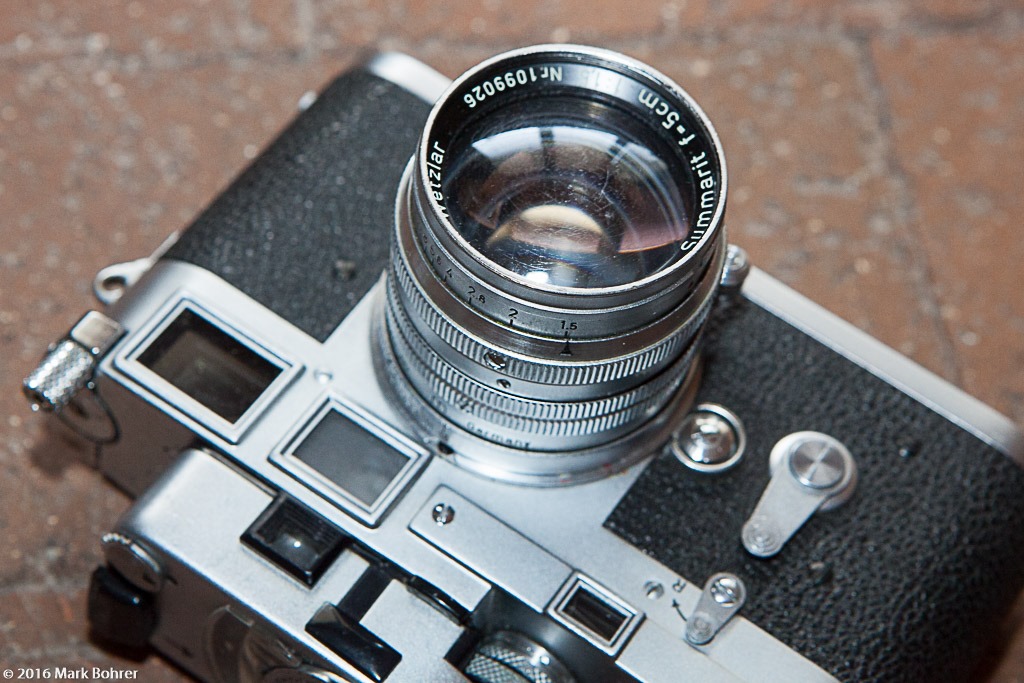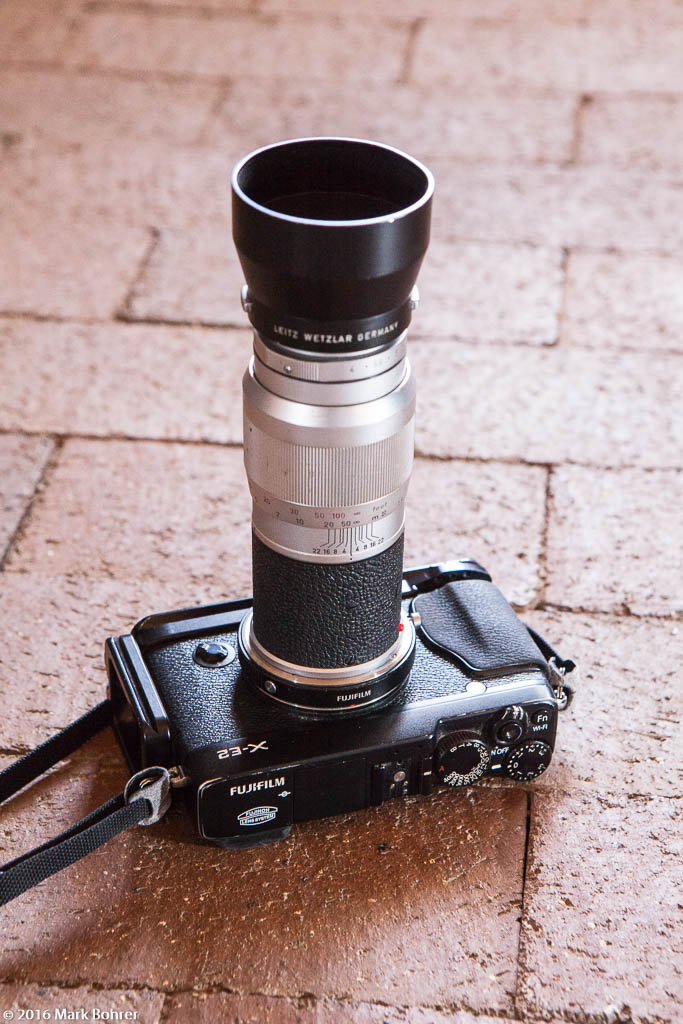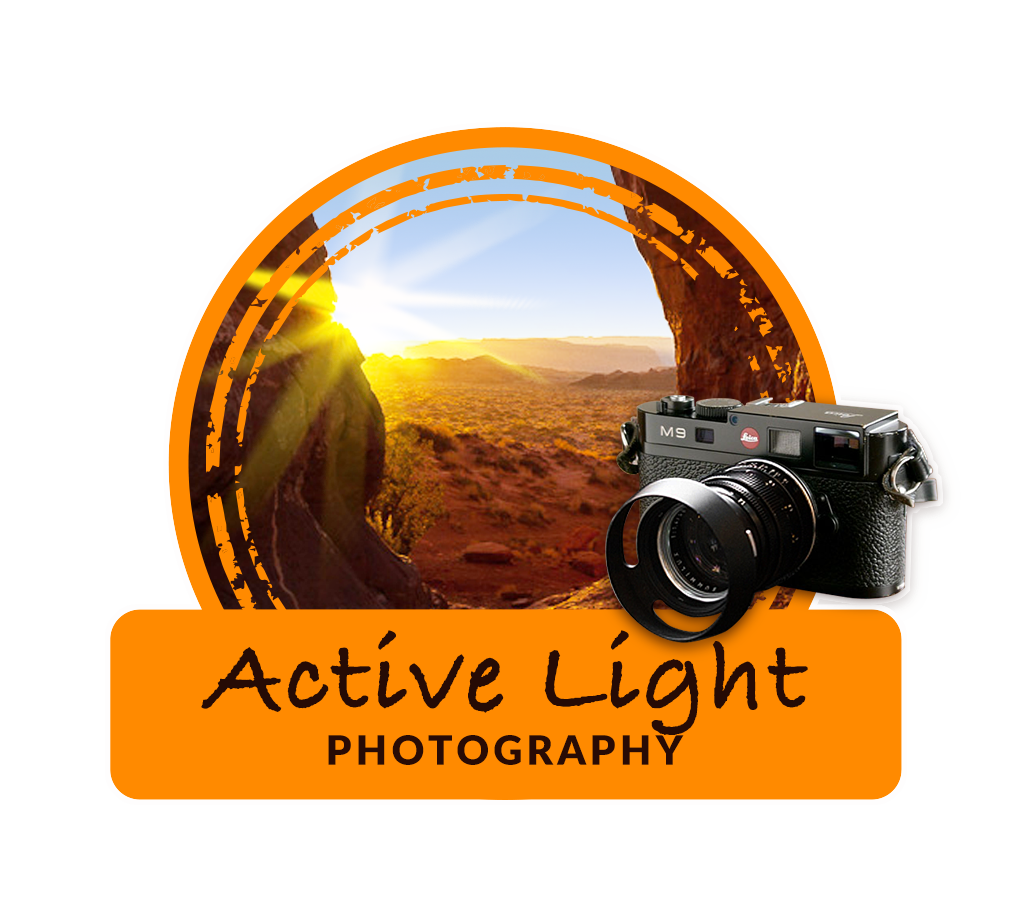|
Cameras without SLR mirrors aren’t new. From Oskar Barnack’s first Leica in 1913, photographers have wanted small, light cameras and lenses to reduce their load.  Desert cottontail, Petroglyph National Monument Fuji X-E2 camera with Fuji M-adapter and Leitz 135mm f/4 Elmar – 203mm full-frame view The First Mirrorless Cameras – Rangefinder Focusing The original mirrorless cameras had separate optical viewfinders to see the picture and optical rangefinders for focusing. They also had lenses with threaded couplings that extended into the lens mount in proportion to the focusing distance. This extension pushed a cam in the camera body, moving the rangefinder prism. That prism projected an image from a second rangefinder window onto the image from the first window, and both images reflected into your eye. When you saw a double image you were out of focus. When you turned the focusing ring and the images matched up, you were in focus. Today, only Leica makes new rangefinder cameras. Here’s a diagram. The problem was what you saw wasn’t what you got. You were looking through a separate viewfinder to see the picture, not the lens.  1954 Leica M3 rangefinder camera Viewfinder/rangefinder windows at extreme left and right A Look Through The Lens Today’s digital mirrorless cameras solve this problem using the sensor to show you the view through the lens. Every major camera manufacturer has a mirrorless offering these days. At this writing, there’s just one standard mirrorless lens mount, and that’s Micro Four Thirds. Olympus and Panasonic both support it. Otherwise, you’re locked in to the manufacturer’s own mount. Or are you? Use Other Makers’ Lenses – With The Right Adapter Mirrorless cameras have a short mount-to-sensor distance – shorter than any dSLR. This allows you to buy a mount adapter and use most older manual-focus lenses on any mirrorless camera. You can focus those lenses over their entire range – close-up to infinity. The catch is that the adapter must give you a way to defeat any auto-aperture mechanism. That’s the spring-and-lever setup that keeps lens aperture at its maximum until you snap the picture. Through a dSLR’s optical viewfinder, this gives you the brightest image possible for critical auto- and manual focusing and viewing. But you need to defeat it when the lens goes on the adapter to your mirrorless camera. Otherwise, the lens will be stuck at its maximum aperture. Adapters from Metabones and Kipon have ways to do this. Autofocus Is Big And Heavy The manufacturer’s mirrorless AF lenses work just like AF lenses for dSLRs. You can also use an adapter to mount most AF lenses you have lying around for your dSLR, and some adapters even give some other-brand lenses autofocus with your mirrorless camera. But most autofocus lenses are big and heavy – and you bought a mirrorless camera to get away from that, right? New Life For Old Manual Lenses Things get interesting when you look at older manual focus lenses and mount adapters. Leica, Zeiss, Voigtlander/Cosina and a few others make manual-everything lenses in Leica’s M-mount. The mount and its lenses have been around since 1954, so there are lots of them out there. You can get some real M-lens bargains on eBay if you search carefully. Additionally, Canon’s FD-series lenses were discontinued after 20+ years when the autofocus EF mount appeared on EOS cameras. Many of Canon’s professional FD L-series lenses can be found on eBay for a fraction of their original price. Mounting one of these older bargain lenses can suddenly give you a big telephoto without the huge size and expense. The 1.5X crop factor from most mirrorless cameras does this. One example – my 135mm Elmar full-frame lens gets a 203mm field of view on a Fuji X-E2. Light And Small Most of these manual-focus lenses are smaller and lighter than their AF-equivalents. Along with the lighter mirroless camera bodies, manual lenses reduce the weight of your gear even further. Your back will definitely thank you. So if you’re willing to forego autofocus, your major expense will be the mirrorless camera. Many of them now feature focus peaking, which gives you thin colored outlines around subject lines when they’re sharp. This makes manual focusing relatively quick and easy.  Fuji X-E2 mirrorless camera with Fuji M-adapter and Leitz 135mm f/4 Elmar from the 1960s – Elmar lens was $140 on eBay I can carry one mirrorless Fuji X-E2 body and four manual-focus M-mount lenses in less than the space of a dSLR and a couple f/2.8L zooms. The mirrorless gear weighs a lot less too. Electronic Viewfinders Can Be Trouble Mirrorless cameras have electronic viewfinders, EVFs. These mini LCD TV screens work fine most of the time. But there are a couple situations that may give you trouble. If you’re shooting in bright sun, you’ll need a good seal between your eye and the viewfinder. Otherwise, it’ll be washed out, and you won’t see the image. It’s like what happens when you’re looking at a window in bright sun – glare keeps you from seeing anything behind that window. I’ve learned to work around this by using one hand to shield my eye and the viewfinder from the sun while I hold the camera with the other. This only works when I’m shooting at fast shutter speeds and don’t need critical focus. But most of the time, I’m not out shooting in bright sun – it can be harsh with boringly-monotonous blue skies anyway. Today’s EVF won’t show you the entire contrast range captured by your camera, particularly shooting raw. So once again, what you see isn’t entirely what you’ll get in the picture. The camera’s rear LCD may show you more of that contrast range, but probably not all of it, either. Nighttime Problems If you’re shooting after dark, you may see nothing but digital speckles in your viewfinder. This happens when there’s not enough light for the EVF to amplify to a visible image, though your eye can still make out stars, mountains and other details. The camera’s electronic controls for long exposures may be great, but only if you can see what you’re photographing. What I do here is mount the camera on a tripod, and set it to underexpose a couple stops to make my picture actually look like it was taken at night. Then I’ll aim the camera at the subject I want, shoot, and look at the LCD to see what I got. I’ll do this enough times to zero in on the shot design (composition) I want. Since I’m not in a hurry for night shots, this works very well. Sometimes A Better Solution For most of what I shoot, mirrorless gear weighs lots less than equivalent dSLR and lenses. I typically carry an EOS 5D mk II, 24-70mm f/2.8L zoom, and the X-E2 mirrorless body with Leitz 135mm f/4 Elmar and three other Leica primes as backups. Compared to the EOS 7D and 70-200mm f/2.8L IS I used to carry as my second camera and lens, it’s lots easier on my neck and back. For upcoming holiday and summer travel, I know what I’ll be using for my second camera. |
(408) 483-3782
Curious about how to shoot ruins?(408) 483-3782

Recent Comments